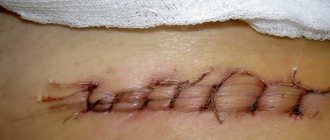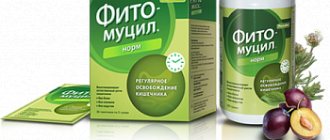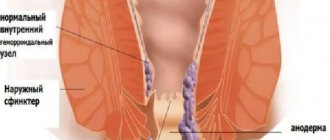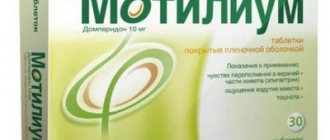Sport is considered healthy by default.
The popularity of fitness centers and gyms is growing; Nordic walking and various proprietary physical exercise routines are in demand among the elderly population. The image of a modern successful person does not fit with excess weight, laziness and low mobility; a healthy lifestyle has even become somewhat fashionable.
However, everything is good in moderation - and the desire for physical perfection should be reasonable. Especially among people with chronic diseases. Patients with gastritis and ulcers can and should engage in sports, but restrictions still exist. Let's figure out what they are.
If it's gastritis
At first glance, exercise and the condition of the gastric mucosa are in no way related to each other. However, this is not quite true. Physical activity has a general stimulating effect on the following processes:
- Circulation.
- Lymphatic drainage.
- Metabolism.
- Supply of tissues with oxygen.
That is, with regular exercise, all processes in our body go faster and better.
Food is digested faster, stagnation does not form in the stomach and intestines, which eliminates the occurrence of heartburn, dull pain, flatulence and other unpleasant symptoms. In fact, sport is a physiological catalyst for the body .
Interesting! It is known that more than 80% of professional athletes have chronic gastritis.
It turns out that statistics contradict our statements? There is a nuance here. We are talking about sports in a health-improving mode, not implying intense training with high loads. And gastritis of professional athletes is associated primarily with irregular and unhealthy diet and only secondarily with increased physical activity.
Rules to follow for gastritis
After visiting the hospital and consulting with a gastroenterologist, a person diagnosed with gastritis must adhere to the following rules when playing sports:
- do not train on a full stomach or on an empty stomach;
- at least 60–75 minutes should pass after the last meal;
- After playing sports, you can eat no earlier than 45 minutes later;
- you should eat properly and fully;
- meals should be fractional;
- there is no need to increase physical activity, it should be familiar to the body;
- when the disease worsens, training should be abandoned;
- It is worth conducting training at the same time;
- You should empty your bowels at least once a day.
If it's a peptic ulcer
For peptic ulcers, sports are also not contraindicated. However, there are more restrictions than with gastritis. This is due to the fact that in the area of ulcerative lesions of the mucous membrane the vessels are fragile and brittle; if there is excessive blood filling, their integrity may be compromised and bleeding will develop. Also, thinned mucosal tissue under unfavorable conditions can perforate (rupture), leading to serious complications - internal bleeding, peritonitis, etc. Therefore, if you have a peptic ulcer, you should not do sudden heavy lifting, active extension movements, or intense jumping.
The conclusion from all that has been said is the following: if you have chronic gastritis and peptic ulcers, you can play sports if you methodically follow the recommended diet. The choice of sport should be discussed with your doctor.
What sports are welcome?
The following sports can alleviate symptoms and become an excellent addition to the main treatment:
- Swimming - freestyle, breaststroke, butterfly.
- Race walking. It has proven itself well for any disorders of the gastrointestinal tract.
- For erosive diseases, gentle exercise on the tennis court and playing badminton can help. A light jog is also not prohibited.
- People who are fond of football can continue their training with gastritis. This also applies to ice skating.
- Stretching and yoga classes at least three times a week will promote recovery.
We choose and get busy
Sports activities are different. For some, morning exercises are enough, while others visit the gym every day. For patients with gastritis and peptic ulcers, the ideal exercise option looks like this:
- Daily morning exercises for 10 minutes before the first meal.
- 2-3 workouts per week in the pool or gym, taking into account the load. Duration - 30 minutes - hour.
Now let's talk about the popular types of physical activity that young people practice to give their muscles relief. And we will do this in the context of existing chronic gastritis or ulcerative lesions of the stomach or duodenum.
Body-building
Bodybuilding or bodybuilding puts muscle growth as its primary goal.
It is the adherents of this sport who not only train to the point of complete exhaustion, but also endure enormous loads associated with lifting weights. In addition, a bodybuilder’s nutrition is a whole system from which one cannot deviate. The diet is tailored to the needs of growing muscles, it contains a huge amount of protein, minerals, and nutritional supplements are required. Professional and amateur bodybuilding does not always mean health; a beautiful body is often combined with chronic liver pathologies, intestinal diseases and other problems.
Conclusion. For gastritis and peptic ulcers, bodybuilding is contraindicated, since the diet for muscle growth does not correspond to the principles of nutrition for stomach diseases. A bodybuilder's enhanced nutrition, enriched with special additives, can provoke an exacerbation of gastritis and ulcers. Constant extreme loads provoke bleeding.
Weight lifting and gym
Weightlifting has always been considered a sport for people who are especially hardy and absolutely healthy.
Even in Soviet times, people were not allowed to exercise with a barbell or weights without a doctor’s permission. And you can start doing strength sports only after 16 years of age if the body is in good physical condition. Today dictates its own conditions - you can get into the gym without any certificates, on a paid basis. And improve as much as you like, sometimes under the guidance of a not entirely competent coach.
Any strength sport, be it a barbell, a kettlebell, or training on machines that involve a constant increase in loads, is based on two techniques - the snatch and the clean and jerk. Neither one nor the other is allowed at all for peptic ulcer disease.
Conclusion. Weightlifting, gyms, and strength training are contraindicated for peptic ulcers. In case of gastritis, the issue is resolved individually - only people with chronic gastritis in the stage of persistent and long-term remission are allowed to participate in classes.
Fitness and variety
It’s easy to get confused in the types of fitness.
Here you can find stretching, callanetics, aerobics, step, and zumba - you can’t list everything. These are quite popular sports among the female population, which are used to maintain and lose weight. Beautiful dance elements accompanied by music alternate with load-bearing exercises, promoting a harmonious distribution of the load. Each direction has its own characteristics; some types of fitness use weights - for example, when doing step training, you take small dumbbells in your hands or tie weights to your shins.
Conclusion. Patients with gastritis and ulcers can engage in fitness without additional stress, i.e. without using weights.
Run
Jogging in the morning is a great alternative to morning exercise. Especially if you live near the park, away from roads. A fifteen-minute morning jog at a slow pace will give you energy and is not at all harmful for chronic diseases, including ulcers and gastritis. If running is difficult, replace running with sports or Nordic walking.
Conclusion. For gastrointestinal diseases, recreational running is not contraindicated. Marathon and sprint running if you have diseases of the stomach and intestines is prohibited.
Swimming
Classes in the pool are the most democratic, as they actually have no contraindications. In the pool, the body does not experience such stress as in aerobic sports, and accordingly, overload does not occur. For gastritis and peptic ulcers, there are many options - aqua aerobics, aquatic physical therapy with an instructor, simple swimming and much more. Exercise for your health. The exceptions are diving, active diving, and scuba diving.
Game sports, wrestling, boxing
For gastritis and peptic ulcers, it is better to avoid activities that are likely to cause sudden jolts, blows to the stomach, or falls. Therefore, it is better to replace team sports and wrestling with individual non-contact sports.
Sports for chronic gastritis
Exercising in chronic forms of the disease is even necessary, but only during periods of remission. Constant loads normalize the secretory functions of the stomach, normalize blood circulation in the abdominal cavity, improve diaphragmatic breathing and can help increase the time without exacerbations.
After the period of exacerbation has passed and the course of treatment with medications has been completed, according to experts, it is necessary to wait 10-14 days before starting physical training. Such time must pass in order for the sick person’s body to fully recover. You should start playing sports for 10-15 minutes a day, gradually and slowly, increasing the time of sports training and its intensity.
For any type of disease, prolonged exposure to nature is not recommended. When hiking, it is not possible to follow all the rules of proper nutrition, which, in turn, can cause serious damage to the stomach. However, short walks in the fresh air will only bring positive results.
Absolute and relative contraindications
Any acute illness is considered an absolute contraindication to sports activities.
This also applies to acute gastritis, in which it is forbidden not only to engage in sports, but also to simply move - bed rest is required. Chronic gastritis in the acute stage also excludes physical exercise. It is not so much the acidity and form of gastritis that matters, but the stage in which it is located. Exacerbation of even the simplest, catarrhal form of gastritis requires rest and a gentle diet during the entire period of acute pain. Regular exercise can be started only a week after the exacerbation.
Important! Exacerbation of gastritis of any form and peptic ulcer completely exclude physical activity.
Consider the table that doctors use when deciding on admission to sports training .
| Absolutely contraindicated | Acceptable |
| Peptic ulcer of the stomach and duodenum, acute stage. | A peptic ulcer that does not cause digestive problems. No exacerbations for 6 years. |
| Peptic ulcer with impaired digestive functions and frequent exacerbations. | Chronic gastritis, excluding special forms in the stage of stable and long-term remission. |
| Special forms of gastritis are autoimmune, hypertrophic, granulomatous, lymphocytic, eosinophilic with digestive disorders. |
Having this information, you can easily decide on choosing a sport for yourself.
Training for various stages of the disease
Light exercises and gentle training are compatible with inflammation of the gastric mucosa. However, even in this case, caution must be exercised. Especially when it comes to a sharp exacerbation:
- When the disease worsens, it is better to wait out this period without training. Take a break for 1-2 weeks. Even if pain does not bother you, start training with minimal loads. Otherwise, a relapse may occur and the disease will return with renewed vigor.
- Even after 2 weeks, you should refrain from vigorous exercise. CrossFit, which is popular today, is undoubtedly a “taboo”. CrossFit exercises are dynamic and varied, but due to heavy lifting they are contraindicated.
The trainer should be aware that you are experiencing stomach pain. He will be able to plan a training session in a gentle manner. On the one hand, you will not lose shape, continue playing sports, on the other hand, you will not aggravate the course of the disease.
If sports and gastritis are incompatible at the time of exacerbation, this does not mean that you need to lie on the couch and do nothing at all. It has been scientifically proven that walking, aerobics, and gymnastics promote recovery. It is worth paying attention to yoga and other eastern practices. They relieve stress and normalize digestion processes. The most useful asanas for gastritis with any type of acidity: cobra, camel, plow. This complex will be useful for peptic ulcers.
Physiotherapy
Physical therapy always requires an individual approach.
An experienced instructor, before starting classes with you, should study your medical record, and only then develop an individual training program. If physical therapy is carried out in a hospital, during an exacerbation of gastritis or ulcers, it is performed while lying in bed, includes turns of the hands, feet, head, breathing exercises and nothing more. Immediately after an exacerbation, exercises can be performed lying on the floor or sitting on a chair. They will not be particularly intense, but they will prevent congestion in the gastrointestinal tract.
Exercise therapy instructors know that with low and zero acidity, exercises on the abdominal muscles are allowed, as they will stimulate juice secretion. It is better if the exercises are planned in the morning, before meals and mineral water.
If you have high acidity, abdominal and abdominal exercises are not recommended. Perform a general strengthening complex before meals, but after drinking mineral water.
If you perform physical therapy at home, do not forget about the time - after performing the exercises, there should be at least half an hour before breakfast. If you didn’t have time before breakfast, you shouldn’t cancel exercise therapy. Do exercises 2 hours after eating, not earlier.
An individual set of exercises will be developed for you by an instructor at the physical therapy room at your local clinic. Do not rely on your own knowledge and advice from friends; it is better to consult a specialist.
Is physical activity allowed?
Gastritis belongs to the category of common diseases that occur in different groups of the population. There are many reasons for its occurrence - poor diet, bad habits, stress, reduced immunity, unhealthy lifestyle. Excessive physical activity can become a provoking factor in the development of the disease and significantly worsen a person’s health.
Gastritis is an inflammation of the mucous walls of the stomach, accompanied by discomfort and pain. As it progresses, it leads to disruption of the entire gastrointestinal tract.
With gastritis, moderate physical activity is allowed. Sports activities in the right dosages have a positive effect on a person’s health and well-being.
They help improve blood supply, normalize secretion and motility, accelerate metabolic and recovery processes in the body.
After feasible and short-term training, the digestive organs function better, and the risk of exacerbations and complications of the disease is reduced.
Yoga classes are good for the body
What sports are allowed and prohibited
Is it possible to exercise and play sports with gastritis? The answer to this question depends on the form of the disease, the degree of its development and spread. The intensity and type of load is selected individually and together with the doctor. During the acute stage, going to the gym is not recommended, as this can lead to a deterioration in a person’s condition, causing erosions or ulcers.
Acceptable sports:
- yoga and pilates;
- stretching;
- swimming;
- walking and jogging;
- badminton and tennis;
- volleyball;
- skis and skates;
- aerobics and dancing;
- a ride on the bicycle;
- exercises on a fitball.
Patients can jog
In case of disturbances in the functioning of the digestive system, including pancreatitis and gastritis, strength training, athletics and weightlifting, martial arts, jumping and running, mountaineering and rock climbing, and sports tourism are completely contraindicated. Blows and injuries, overstrain of the abdominal muscles, irregular diet - all this can worsen the course of the disease and lead to serious consequences.
Training with low and high acidity levels
The duration and intensity of exercise depends on the degree of secretion of hydrochloric acid in the stomach. An accelerated pace and large amplitude increase acidity, and long lessons help reduce gastric secretion. It is important to choose the right regime and composition of sports nutrition. In this case, the last meal should be one and a half to two hours before bedtime.
Normalizing the acid balance in the stomach is an important factor contributing to proper digestion and human recovery.
Exercise should be combined with proper nutrition
How to train with increased acidity:
- The intensity of exercise should be increased gradually. The peak of activity should occur in the middle of the lesson. Towards the end of the lesson, you should slowly reduce the load, be sure to use stretching and relaxation exercises.
- All movements are performed smoothly and slowly, without shaking or jerking. Active actions should be alternated with relaxing techniques. In between approaches, it is necessary to give the body a few minutes to rest and restore breathing.
- A high-repetition cycle of exercises and an extended fitness lesson (60-90 minutes) are recommended. It is important that during the training process a person experiences only positive emotions; fatigue and stress can negatively affect the disease.
Fitness classes allowed
How to exercise with low acidity:
- Training should not last longer than 30-40 minutes a day. It is recommended to go to the gym in the first half of the day.
- It is better to perform exercises with fewer approaches, but in a more intense mode.
- It is not advisable to do static exercises and variations with holding your breath. There is a strong tension in the problem area, accompanied by discomfort.
Physical activity for gastritis during remission or exacerbation
It is prohibited to play sports if a person has a stomach ache, reflux and belching, nausea and even vomiting, or stool disorder. These symptoms indicate the development of the acute stage of the disease. You should continue training only after complete recovery and elimination of negative symptoms.
Abdominal pain is a direct contraindication for sports
Attacks of gastritis combined with intense strength training can cause serious harm. At the time of pain and spasms, when a person’s condition worsens significantly, it is forbidden to use heavy weights, switch to new training programs and excessively strain the muscles of the body.
During stable remission, when there are no negative signs of gastritis, training turns out to be beneficial for a person. Experts recommend giving preference to systematic moderate loads.
A feasible and non-tiring program has a tonic and general strengthening effect on the body.
Physical exercise in combination with proper nutrition helps normalize the secretory function of the stomach and prolong the period of remission.
Gastritis and sports
For athletes, physical activity is an integral part of life. Big sports are heavy and intense loads.
During treatment, it is necessary to limit training and avoid exercises related to strength and endurance. If the condition improves, the athlete will be able to return to the full training process.
It is important to learn how to create the right diet and correctly dose sports activity.
In the early stages of the disease, training may not be limited.
Permissible degree of physical activity for different forms of gastritis:
- With a superficial or catarrhal form, restrictions on sports activity are not required, even during drug therapy. Timely treatment can quickly stop the first signs of digestive disorders and cope with further progression of the disease.
- Exacerbations and attacks, manifested by a general deterioration in well-being, the occurrence of additional symptoms indicating a disorder of the digestive system, serve as a signal to stop any type of training. It will be possible to return to active life after a course of treatment, which usually takes from 10 to 20 days. The time and pace of training should increase gradually, depending on the health of the athlete.
- Without treatment, chronic gastritis can develop into an erosive or atrophic form, which is characterized by irreversible destructive changes in the mucous membranes of the stomach. Any physical activity and stress at this stage lead to negative consequences - deterioration of health, dehydration, internal bleeding.
With advanced gastritis, playing sports can make you feel worse
- If a person has undergone surgical interventions on the digestive organs, then he will have to give up full-time activities for a period of 6 to 8 months. After surgery, you should move with caution from simple exercises to complex programs, focusing on the athlete’s health condition and the recommendations of the attending physician. General strengthening exercises and breathing exercises help strengthen the immune system, increase tone and prepare the body for more intense stress.
Gastritis prevention and physical activity
Sport helps in the prevention of gastritis. To achieve success, you should adhere to the rules of moderation and regularity of exercise, avoid overexertion and fatigue, abandon strict diets and take special nutritional supplements with caution.
You should start your classes with the simplest exercises - morning exercises, light jogging or physical therapy. It is better to increase the complexity of the workout after consulting with a specialist.
A sports lifestyle combined with a healthy and balanced diet is a prevention and effective measure to get rid of the disease.
For information on effective methods of treating gastritis, watch the video:
Benefit for health
You should think about the prevention of gastritis, peptic ulcers and all other diseases before you get sick. Sport is an excellent preventive measure; it helps the processes of metabolism, digestion, and blood circulation. Reasonable physical activity, proper rest, and a balanced diet make up a healthy lifestyle.
If you are a professional athlete, pay more attention to nutrition, give up synthetic additives and stimulants that irritate the stomach. And then you will not be among the statistical 80% of athletes who have gastritis.
Sports recommendations for those who suffer from gastritis
Through numerous experiments, scientists have found that the rate of gastric juice secretion directly depends on the load on the body. The more intense the exercise, the faster the release of digestive enzymes, which is completely undesirable with high acidity. Therefore, recommendations for patients with hyperacid gastritis will be as follows:
- Perform each exercise smoothly, try to avoid sudden jerks.
- Always start your workout with a leisurely warm-up. It will help avoid a sudden jump in acidity.
- Even if the plan is strength training, try to alternate it with relaxing techniques. This regulates the secretion of hydrochloric acid well. When an athlete alternates dynamic push-ups or squats with yoga asanas, digestion processes proceed normally.
- With repeated repetition, the patient's condition improves.
- Ideal types of physical activity for high stomach acidity would be yoga and Pilates.
Experts advise training 40 minutes before lunch. The concentration of hydrochloric acid is at an extremely low level. But after 20.00 it is better not to train. Doing exercises during this period becomes real stress for the body.
Advice for patients with low gastric secretion will be different:
- Plan your workouts for the first half of the day. The sooner you start doing exercises, the better. At the end of the lesson, drink 200-250 ml of still mineral water.
- It is advisable to reduce the number of repetitions. The intensity and pace are also reduced.











